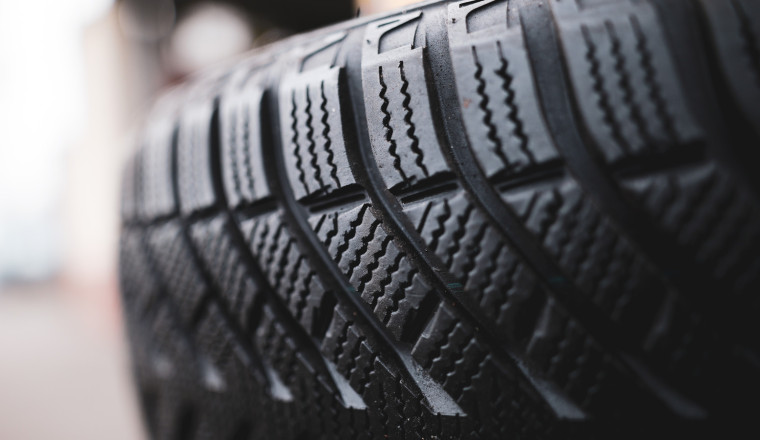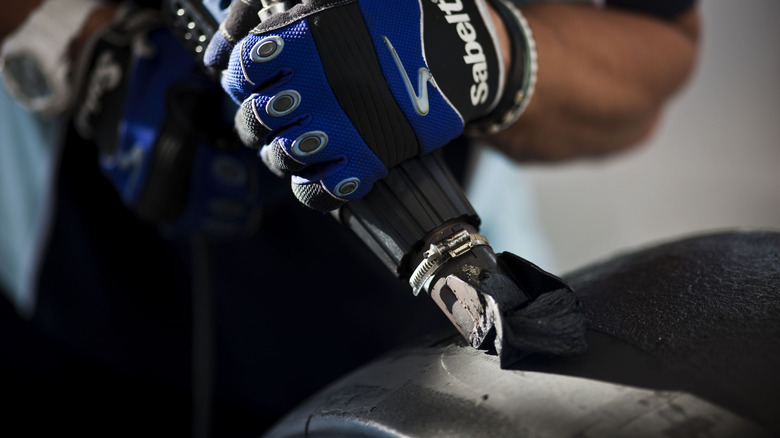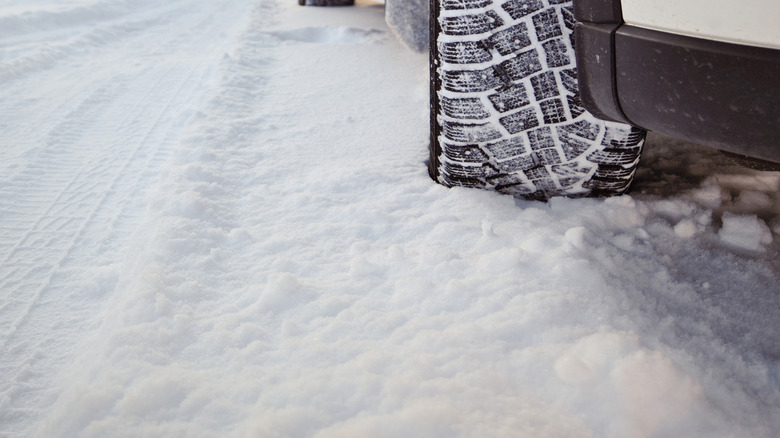
Tire siping sounds like something a workshop made up to upsell to you during an oil change, but it's actually a legit procedure. It involves cutting tiny slits into the tread blocks to help your tires grip better in slippery conditions like driving in the snow. These little slices flex open as the tire rolls, giving it a larger footprint to bite into slippery surfaces. Think of the small sipes as additional gripping edges that hold onto the road more effectively. The idea isn't new and actually dates back to the 1920s, and it's why winter tires don't just look different, they act different. More sipes mean more grip when traction disappears in icy conditions.
From the factory, siping is baked into many winter tires for this exact reason. Some shops offer to cut sipes into regular all-season tires or even performance tires as they aren't as good in extreme winter conditions, and are known as aftermarket siped tires. Sounds great, right? Better traction without buying a whole new set? Hold on now, not so quick. Aftermarket siping is a mixed bag, and plenty of tire pros say it's more trouble than it's worth unless you really need it.
 Drew Gibson/Getty Images
Drew Gibson/Getty Images
Tires aren't just black circles with grooves, they're carefully engineered to balance grip, wear, heat, and road feel. Factory siping is part of that design, but when a shop adds sipes, they're messing with a tread pattern that was never meant to be altered. Sure, the added sipes might promise better grip in the snow, better braking and lesser heat build-up, but the downsides are real. Too many cuts can weaken the tread blocks, making them more prone to tearing or breaking, or even trap more road debris, reducing their effectiveness. Poorly executed aftermarket siping may compromise the structural integrity of the tire, and that's going to spell trouble in terms of safety.
Manufacturers aren't thrilled about it either. Some say aftermarket siping voids the tire's warranty, since they can't guarantee how it'll perform once you've started slicing it up. And unless you live in a place where it snows most times in the year, the benefits might not outweigh the risk. Siped tires may not offer any benefit in dry conditions, and you're also increasing the risks of punctures and failure. You're better off just buying winter tires in the first place, since they are designed with performance in icy conditions in mind and built with a softer compound for more flex in the cold, offering better traction.
 Krezodent/Shutterstock
Krezodent/Shutterstock
If your commute includes snowbanks, black ice, or sketchy backroads for a majority period of the year, siping makes sense. The extra grip helps with better traction, braking, and overall confidence when the weather turns ugly. It also has other advantages like running cooler over extended distances in those conditions, better handling and reduced risk of aquaplaning, and extended tire life. In that context, siping isn't just helpful, it's critical.
It does help keeping in mind that siping a set of four tires could cost up to $60. So weigh that against a set of dedicated winter tires if you're considering costs as well as the detrimental effects on the tread and messing with manufacturer warranty on your current set. If your driving life is mostly on dry pavement and highways, siping is probably doing more harm than good. There's a risk of loss of grip and reduced tread life and of course, you'll ruin a good set of tires. Moral of the story is that if your tires didn't come siped, maybe there's a good reason for that.














